So you have built a brand, large enough for it to be searched on Google? Now, how well are you ranking for all those branded queries?
A few days ago Joy Hawkins posted a very insightful thread distinguishing between two important brand-driven search queries:
- Branded searches are searches for brands that you sell (even if it’s a part of your business name) that returns a list of results.
- Direct searches are searches for your specific location that return a Knowledge Panel (also referred to as “Authoritative OneBox”).
For example, [State Farm] search triggers local-three-pack results. That’s a branded search:
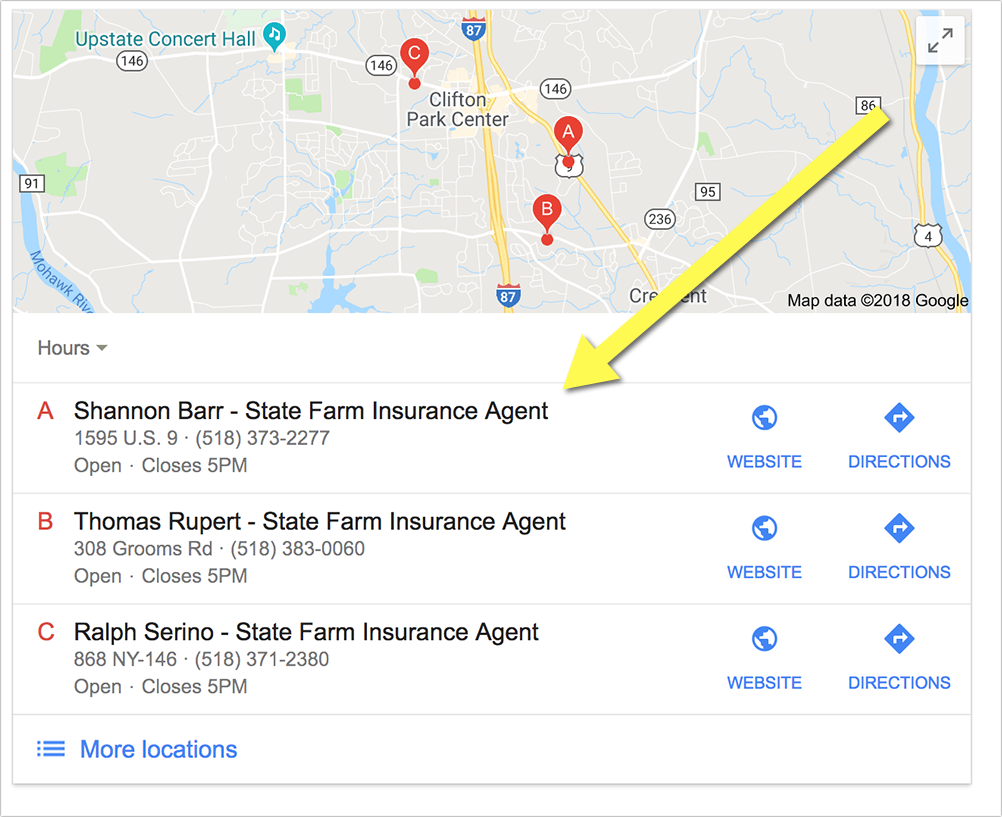
[State Farm Shannon Barr] returns a knowledge graph: That is a direct search:
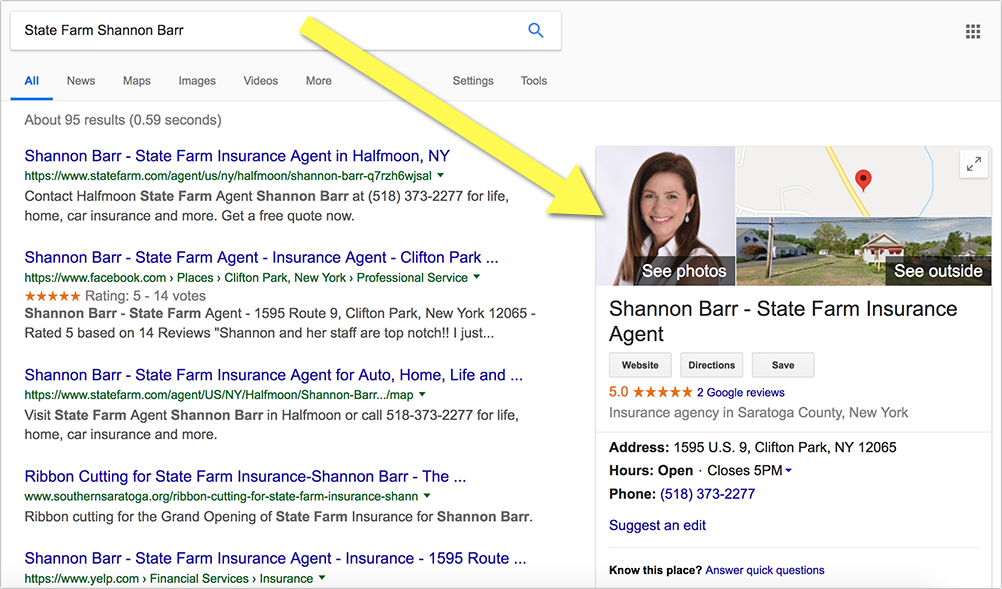
This classification makes your local search optimization strategy much more clearer and better organized:
- Create and optimize your third-party brand assets to dominate as many results for your direct search results as you can
- Collect all your branded search queries and create the optimization strategy to rank high (as well as appear in local-three pack)
Let’s discuss the above two points in more detail:
1. Dominate direct search results
Here’s one important thing that you need to always keep in mind when creating your strategy for these: More often than not, this search is driven by ROPO / ROBO (research online purchase/buy offline/online) behavior.
What this means is that those searchers already know you and are ready to purchase. In fact they are so ready that they take time researching you online.
This is huge.
This also needs to push you to keep a closer eye on those direct search results and what first impression they make when someone looks at them for the first time.
The first impression matters here. A lot.
With that in mind, perform and repeat the following exercises on a regular basis:
- Perform that direct search (this may include your full business name, your business name plus your business address, your business name plus your / the owner’s name, etc.)
- Evaluate reviews and ratings (rich snippets) searchers see right away. Should you spend some more effort on a particular platform (Yelp, Facebook, etc.) to improve your overall rating there? Should you try and push any of your other listings higher in search, those where you have managed to build a better rep? Should you try and obtain verified presence at new local platforms (probably those that rank high for your competitor’s name). Smaller local directories can give you better, easier controlled rich snippets, e.g. Business.com, DirJournal, BizJournals, etc.
- Evaluate third-party assets those trigger (your interviews, standalone reviews, articles about you, etc.). Should there be other – more favorable 0 assets pushed there? (For example, events you spoke on, your other interviews, books, etc.) Should more of those be publicized? (E.g. publish and promote that video where you were speaking!)
- Evaluate visual search results those trigger (images and videos). Can those be hurting that important first impression? Should I be publicizing more images, including photos, visualizations, etc.?
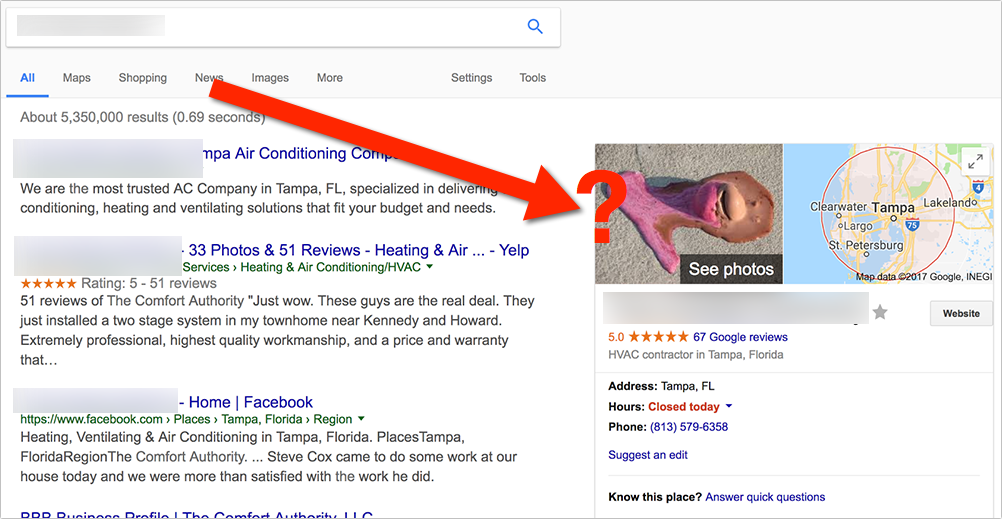
The search results are always evolving, so it’s important to perform those exercises on a regular basis as well come up with and implement a new plan at least yearly.
2. Collect and organize your branded search queries
This is one of those steps that’s unbelievably missed by many, even big, brands.
Remember: Your important branded search is not just your actual business name. There are hundreds and (for bigger brands) even thousands of ways your potential customers are searching for you online.
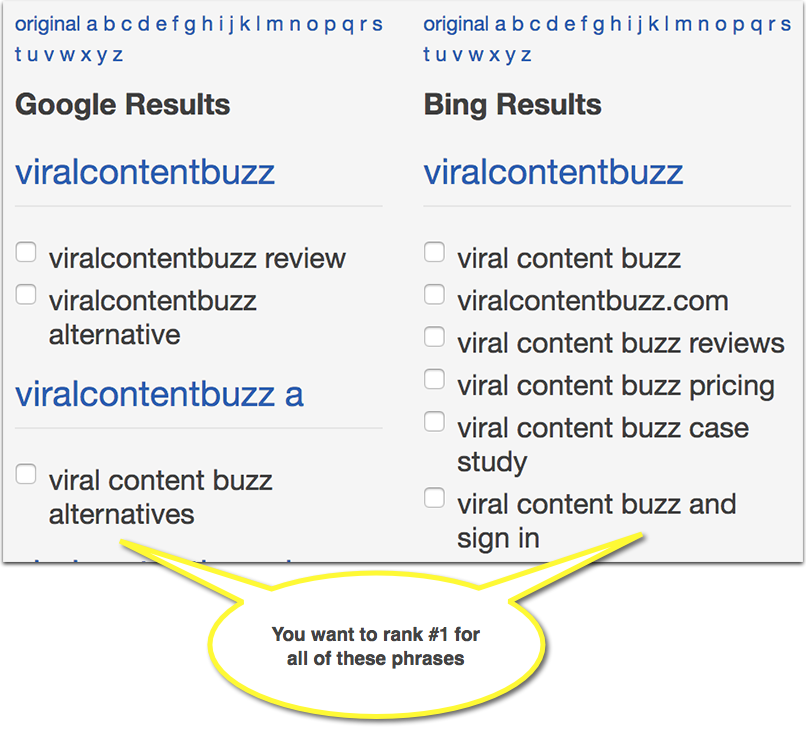
Here are a few most important ones to keep an eye on:
- ROPO queries (these are ready to buy) Your brand name + reviews
- High intent queries (almost there!): Your brand name + your product / feature. Here’s a bit more on this type
- Navigational queries (your site navigation should be addresses): Your brand name + contact / login
- Competitive research (these customers are the easiest to lose!) Your brand name vs your competitor’s name. *Wistia is doing a great job optimizing for those: Notice their well-optimized landing pages for these types of queries. Example:
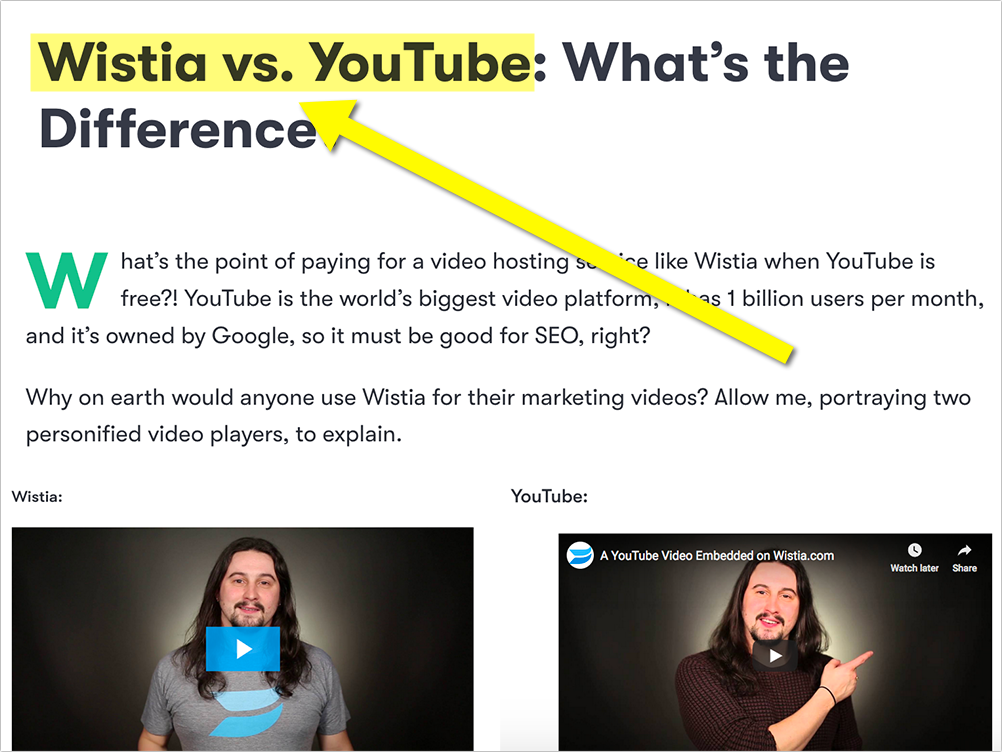
And here’s another thing to remember: You want to rank #1 (and if possible #1, 2 and 3) for all of those! Otherwise, you may lose a customer to a competitor or a blogger who is suggesting a better alternative or simply advises against your brand.
But not just that! Think about all those “blended” search results that may distract the user’s attention from your brand:
- Local pack
- Videos
- Images
- Product results
- People Also Ask, etc.
Whenever these are triggered for your branded search, include a separate strategy for conquering those too, e.g. “[brand name vs your competitor’s name] needs a video”.
Serpstat is a solid platform helping you research and organize all those branded queries in a meaningful way.
- You can sort branded queries by search volume or keyword difficulty
- You can see at a glance which blended search element each query triggers (as well as filter by any)
- You can add all the branded queries to their rank tracking tool under a separate project to keep a close eye on how you rank:

Serpstat’s output gives a very good insight into search results for each keyword without the need to actually search for each one in Google. This allows you to efficiently create a thorough branded search optimization strategy.
You can read more about there keyword selection tool here.
3. Optimize for local-three pack rankings
Local-three pack has changed local search optimization a lot. It is also leaving a lot of local businesses and marketers confused because there’s not much obvious logic behind it, in some cases.
There are no official recommendations helping us understand what can get a businesses into the well-used local three pack, obviously, but here’s what I was able to collect from reputable sources and my own observations:
- Keep your local listing verified and completed (including those newer sections like Google Local Posts)
- According to Bright Local, businesses appearing in the Google Local 3-pack have an average of 47 Google Reviews (work on those reviews).
- There’s a huge on-page factor in play (Make sure those branded search queries are mentioned on your landing page)
- As basic as it sounds but keywords help everywhere: In your business description on Google local, on your page (again), in your business reviews, etc.
- Seasonal fluctuations. I’ve seen businesses with “March” in the business name suddenly appear in the three local pack during spring. I am not sure if there’s anything to do here to put this idea into practice but at least we know those rankings are not permanent.
More on ranking in local-three pack: How to Start Ranking in Google 3 Pack ASAP
Are you optimizing for your direct and branded search queries? Let us know in the comments!
from Content – Search Engine Watch https://ift.tt/2Ou1UpQ
via SEW ref=da&site=blogger">IFTTT

No hay comentarios.:
Publicar un comentario